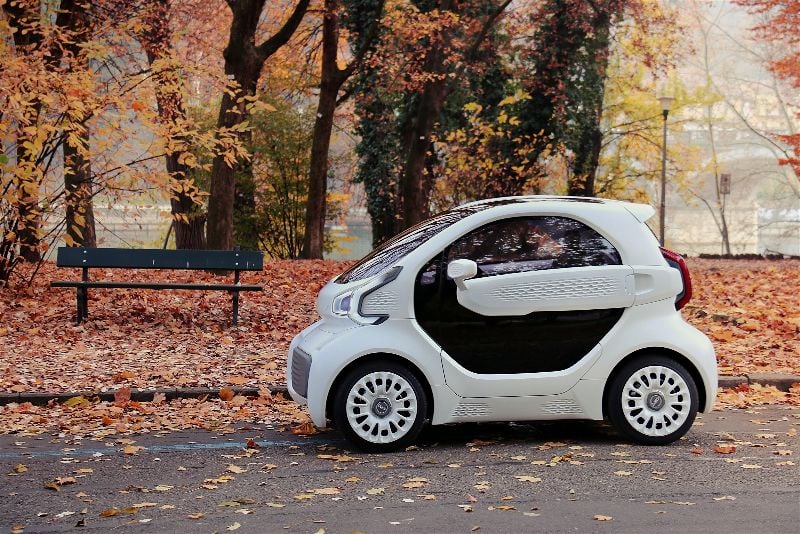
3D print materials provider PolyMaker has struck a deal to help build a mostly-3D printed automobile.
PolyMaker has been making great strides recently in the introduction of more exotic engineering materials for use by professional 3D printer operators. This venture appears to be a way for them to demonstrate the power of some of their new materials in a practical manner.
They’ve partnered with Italian company XEV to produce the LSEV, an all-electric urban vehicle that seems reminiscent of a SmartCar in appearance.
But the appearance is only superficial, as there are tremendous differences between this vehicle and common automobile designs.
The intent is to mass produce the vehicle and at the same time take on maximal use of 3D printing technologies. This is quite different from most previous “3D printed car” ventures. The very first “3D printed car”, the Urbee, unveiled in 2011, was mostly a conventional design with 3D printed body panels. Some of the panels included pre-made channels for wiring, but this was perhaps one of the first attempts as such uses of 3D printing.
The LSEV is different in the degree of 3D print technology leverage that’s being attempted. While it has a steel chassis, almost all of the remaining parts of the car are intended to be 3D printed.
The part designs are very different. In a typical vehicle of this type you might expect to see over 2,000 parts. However, the LSEV’s incredible design uses only 57 3D printed parts due to the integration of functional features into these parts.
Some interesting customization is also possible, as each part could potentially be different as it is 3D printed. I’m told they will be making various styles of body panel textures.
But now let’s talk about PolyMaker’s role. They are to provide the filament required for all this 3D printing. PolyMaker will deliver four types of nylons and two flexible TPU materials.
But it isn’t quite as simple as that. If you were to simply grab nylon filament off the shelf and attempt to 3D print these large automotive parts you would fail. Why? Because at those sizes the material would surely warp during 3D printing.
And this is the secret sauce that PolyMaker is adding: they’ve apparently developed specialized materials that are “warp free”.
This will enable XEV to 3D print the required parts on their own 3D printer specifically designed for this purpose. It is said to have a build volume of around 1.5m on a side, so that would definitely be considered large and prone to warping.
But get this: their custom 3D printer is unheated!
This is the most pathological 3D print scenario you can concoct: printing warpy materials at large scale on a cold machine.
But somehow PolyMaker has been able to mix up a filament formula that overcomes this effect, and in a manner that even permits large scale manufacturing.
I’ve very interested to see how these new materials are received and used in other applications. Their lack of warp may even permit them to be used on low-end desktop 3D printers that aren’t properly heated.
However, the owners of such machines might not want to afford the prices of these materials.
Via PolyMaker

